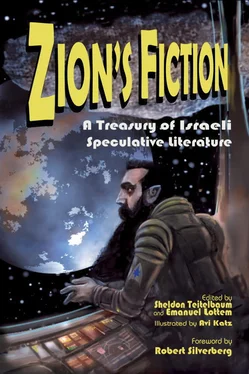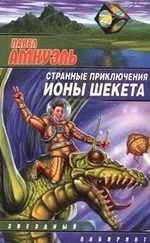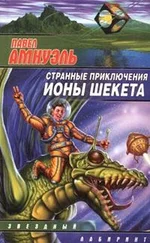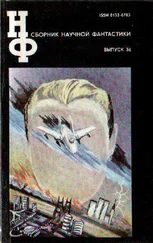All solvers had forty-eight hours to carry out the building of the representation they had received. However, in order to rank among the first three, thereby acquiring world acclaim and sizable amounts of cash, a team had to complete the task in less than half that time. The world record, established nine years earlier, was twenty hours, fifty-five minutes, and seven seconds.
Tommy assisted Alfred in wheeling the trolley with the package onto the Lintons’ porch. Alfred Collins, the man who lived next door, was a rather timid, frail-looking gentleman in his sixties. He had moved to the neighboring cottage a couple of years earlier and had befriended the Linton children almost immediately. Their love for puzzle solving could be ascribed largely to Alfred’s close companionship—something the youngsters unconsciously craved while their parents were busy with their career activities. Alfred coached and managed the Linton team, contributing enormously to their success in the previous year’s competition.
“Hey, guys, it’s here!” Tommy shouted, opening the front door. “Thanks, Alfred, for helping me roll it in. You really should be more careful with that leg of yours.”
Alfred never stopped grinning. “You’d better get started.”
There was a flurry of activity—not a second was to be lost. Tommy and Alfred lugged the large package into the puzzle room. Dave and Lily hurriedly removed the wrapping, and Alfred hastily made his way out so as not to be caught by the automatic tracker lens. This was an advanced telecamera operated to ensure that the solvers received no outside assistance and that only authorized computing equipment was used. It was triggered by the removal of the top panel of the box.
“Good luck!” yelled Alfred from behind the closed door.
No one bothered to answer him. The game was on!
“Operating the disperser,” called Tommy. “All hands to the assembly deck.”
The disperser was a huge contraption with bellows, trunk, and hose. It, together with the computer, was the only mobile machine permitted in the puzzle room, according to the competition rules. Its job was to suck in all the pieces from the box and arrange them individually on the large apron surrounding the assembly deck. It was a relatively old model, and it took over a minute to finish the job.
“All pieces taken out,” announced Lily, extracting a small, star-shaped piece from the bottom of the box.
Apart from the disperser, the Lintons’ puzzle room was quite highly developed. All the previous year’s winnings, five thousand credits, were invested in innovations and improvements. The three-thousand-credit loan they had taken from Alfred was never returned (in fact, Alfred refused to take it back), and with it they bought an enormous ceiling mirror, allowing all of them to see all the pieces from anywhere. The room itself was very large, with a round deck in the middle that could snugly have accommodated a sumo ring. The deck was fitted on a hydraulic booster that could sink below floor level, and the surrounding apron was equipped with sliding metal plates that could carry a person toward the center of the deck. This machinery, standard to puzzle rooms everywhere, was absolutely vital for providing access to all points of the puzzle without endangering any of the unused pieces or partly erected sections.
The race against the clock had begun.
“First observation: ocean fragment with part of a coral reef. Also an unidentified brown object,” announced Piper, in its typical piping voice.
Piper, the Lintons’ compact computer, hovered lightly over the deck. Its spatial navigation was enabled by the repelling forces acting between the powerful electromagnets installed in its base and beneath the floor of the room. A tiny processor controlled the electromagnetic intensity, thereby allowing Piper motion anywhere within the room. This hovering capability was developed by Alfred and was approved by the Organization. It gave the computer a slight advantage over other puzzle computers, which traveled through a complex mesh of wires and cables.
“Restrict your scrutiny to the ocean and the ocean bed,” instructed Tommy.
The three siblings regarded Piper as their smart younger brother. Eleven-year-old Lily named him, and the brothers constructed him with the necessary computer intelligence for participating in puzzle contests. Tommy and Dave, fifteen and thirteen years of age, respectively, found that endowing the computer with the appropriate competence, while at the same time remaining within contest regulations and installing it into very compact resources, was a challenging effort indeed. Without Alfred to guide and advise them, their task would have taken triple the time.
The construction was necessary; the Organization wished to prevent an unfair advantage to the resource-affluent competitors such as the brain tanks. Therefore, all competing computers had to be confined to a size no larger than a tennis ball and weighing no more than three kilograms. Within these restrictions, the computer needed to cope with vision, speech, hearing, motion, and display—not to mention the actual solution processing itself. Indeed, enhancing one of the functions usually deteriorated one or more of the others. The solution processor needed to be able to scan all twenty thousand pieces and group them in ways that made sense to the solvers. This capability was directly dependent on its size and the quality of its programming.
“Detecting a sandy segment with marine vegetation. Probably extending all the way to the reef. Assembling,” called Lily.
“Okay,” confirmed Piper.
One of the three small lenses on Piper’s surface was focused on Lily. The computer could therefore confirm that the pieces she was handling did, in fact, match. What actually occurred was that any piece could be attached to any other piece by setting their surfaces together, and they would adhere to each other by magnetic force. However, nonfitting matches would fall apart about ten minutes later. It was the computer’s job to verify that such mismatches did not occur.
“I see the base of a large coral,” reported Dave. “I’d say about… umm… four hundred and fifty pieces.”
Tommy eyed his younger brother with unconcealed admiration while deftly putting together a submerged boulder. Dave was rapidly becoming an indispensable factor within the team. The very same Dave, until last year the team’s weakest link, was now revealing an uncanny photographic memory, enabling him to identify hundreds of matching parts at a glance. If he would only improve his coordination, mused Tommy, he could easily become one of the great masters.
The assembly work continued briskly. Portions of ocean bed and occasional corals began to appear on the deck. Dozens of crabs, sea urchins and starfish were strewn on the reef and within the vegetation covering it. The sea urchins were so lifelike that Lily actually pricked her finger while positioning one of them on a coral. The oysters were also very faithful to nature, and Tommy even fit a small pearl into one of them.
“Thirty minutes have elapsed,” announced Piper. “Crab and coral size ratios indicate a scale of one to ten. Unidentified object probably an ancient sea-going vessel. Attempting design of initial overall view; results in approximately five minutes.”
The picture that appeared on the 3-D screen exactly five minutes later was just a rough outline. It displayed a small coral reef surrounded by ocean. On the ocean bed, and adjacent to the reef, was the crude depiction of an antediluvian ship.
“Quite a coincidence,” pondered Tommy. “Just a couple of months ago we assembled a puzzle of a sunken ship named the Titanic .”
He sincerely hoped that the image on the screen closely resembled the solution. He realized that it was just a rough sketch, but Piper would henceforth update it continually with every piece assembled. Tommy knew that the closer the image was to reality, the easier their work would be.
Читать дальше






